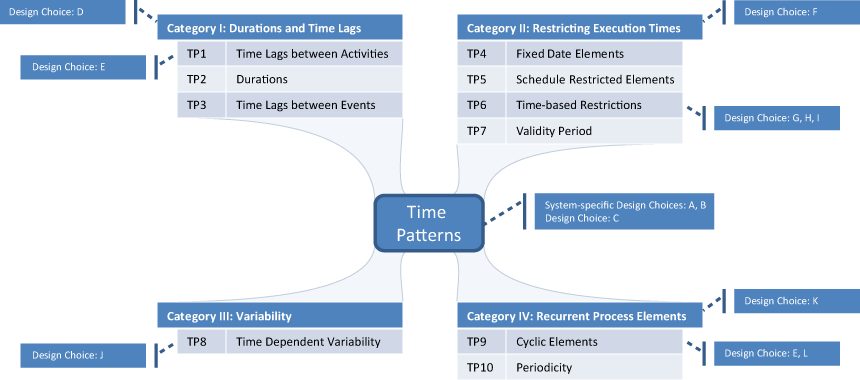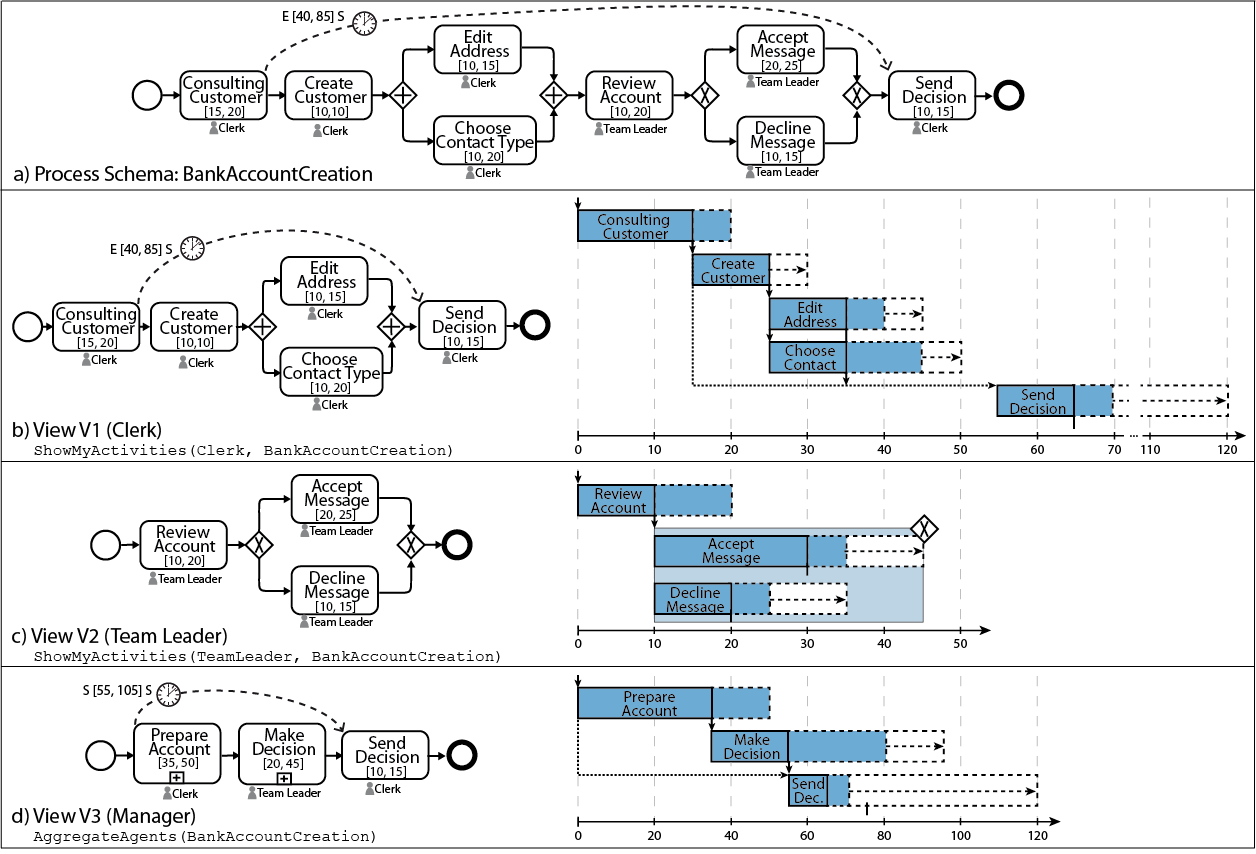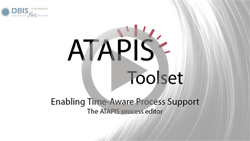ATAPIS - Adaptive Time- and Process-aware Information Systems
Project Description
Temporal aspects play a crucial role in today's business life. Delivery times, appointments, and statutory deadlines must be met, processing times and durations be monitored, and economic objectives be pursued. Hence, in our fast paced world, where even small delays might cause severe problems, for companies it is crucial to be aware of the temporal properties of their business processes and to control and monitor them. This becomes even more important in the context of long-running business processes like patient treatment or automotive engineering. Unfortunately, contemporary process-aware information systems (PAISs) lack a comprehensive support for temporal aspects, which restricts their applicability in practice significantly.
Fig. 1 shows an example of a process model enriched with a set of temporal constraints.
The major goal of the ATAPIS project is to develop a comprehensive framework for the specification, control and monitoring of time-aware processes in adaptive PAISs. Special attention will be paid to the correct execution of time-aware processes under real world conditions, as well as to their dynamic adaptation. In particular, it must be possible to execute time-aware processes in a PAIS without affecting its robustness or performance.
Although there exists extensive work on how to verify time-aware processes during build-time, existing approaches often exclude issues related to the execution, control and monitoring of time-aware processes at run-time. In particular, existing algorithms and techniques for verifying and executing time-aware processes are limited due to their high complexity. In large scale PAISs, usually hundreds or thousands of process instances are executed concurrently. Hence, it is crucial that the control and monitoring of time-aware processes are handled in an efficient way.
Another fundamental aspect concerns the ability of a PAIS to dynamically adapt running process instances if required, e.g., to handle exceptional situations or to evolve processes to changed circumstances. Especially, this applies to time-aware processes in dynamic environments (e.g. hospitals). For highly dynamic processes, in addition, parts of the process (including respective time constraints) may be even defined completely dynamically during run-time. In summary, it must be possible to apply existing concepts for adaptive PAISs in the context of time-aware processes as well. Finally, users must be enabled to interact with the time component of PAIS. For example, they must be able to assign dates to activities and align them with their personal schedules. Further, users should be notified about delays or predictable problems related to their time-aware processes.
| Lanz, A. and Weber, B. and Reichert, M. (2012) Time patterns for process-aware information systems. Requirements Engineering. | |
| Lanz, A. and Weber, B. and Reichert, M. (2010) Workflow Time Patterns for Process-aware Information Systems. In: BPMDS'10. |
As a first step towards the integration of a PAIS (and process models respectively) with time information and time constraints we have identified recurring patterns for representing time information and constraints in PAISs (cf. Fig. 2). These ![]() time patterns not only facilitate the evolution and comparison of PAISs in respect to their time support, but also guide our efforts towards the implementation of a time-aware PAIS. The proposed time patterns complement existing workflow patterns. They were systematically identified by analyzing a large collection of process models in domains like healthcare, automotive engineering, and aviation industry.
time patterns not only facilitate the evolution and comparison of PAISs in respect to their time support, but also guide our efforts towards the implementation of a time-aware PAIS. The proposed time patterns complement existing workflow patterns. They were systematically identified by analyzing a large collection of process models in domains like healthcare, automotive engineering, and aviation industry.
| Lanz, A. and Kolb, J. and Reichert, M. (2013) Enabling Personalized Process Schedules with Time-aware Process Views. In: HCIS'13. |
Generally, when incorporating the temporal perspective complex and large process schemas may result, which are difficult to comprehend for users. In particular, it is important that all users involved in a business process are aware of respective temporal constraints. To tackle this challenge, we introduce an approach transforming a time-aware process schema to an extended version of Gantt charts. Gantt charts are a well known technique in project management. In particular, Gantt charts allow users to easily perceive and assess temporal properties of time-aware processes. However, despite their simplicity, representing an entire time-aware process schema as Gantt chart might be complex and inappropriate for end-users. To address this issue, we provide mechanisms for abstracting a process schema (and the respective Gantt chart) to meet specific requirements of a particular user. This allows providing personalized process schedules for each user and thus reducing the complexity of time-aware process schemas.
ATAPIS Toolset
The concepts of ATAPIS are implemented in a tool package, the ATAPIS Toolset. The ATAPIS Toolset allows specifying time-aware process schemas as well as checking their temporal consistency at design time. Furthermore, time-aware process instances may be executed and be continuously checked for any temporal constraint violation at run time.
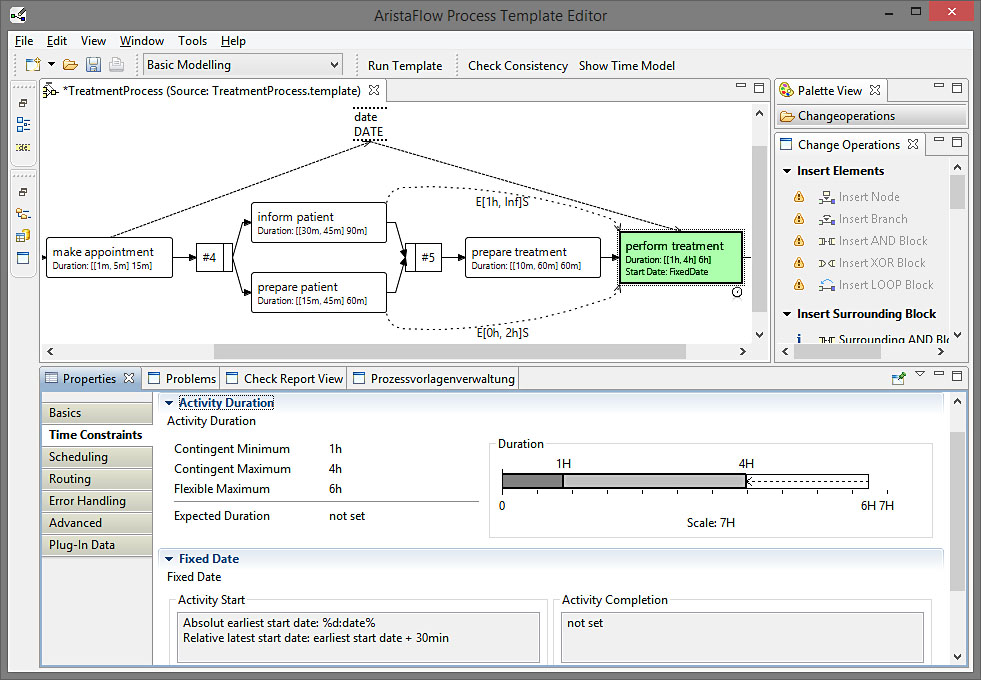
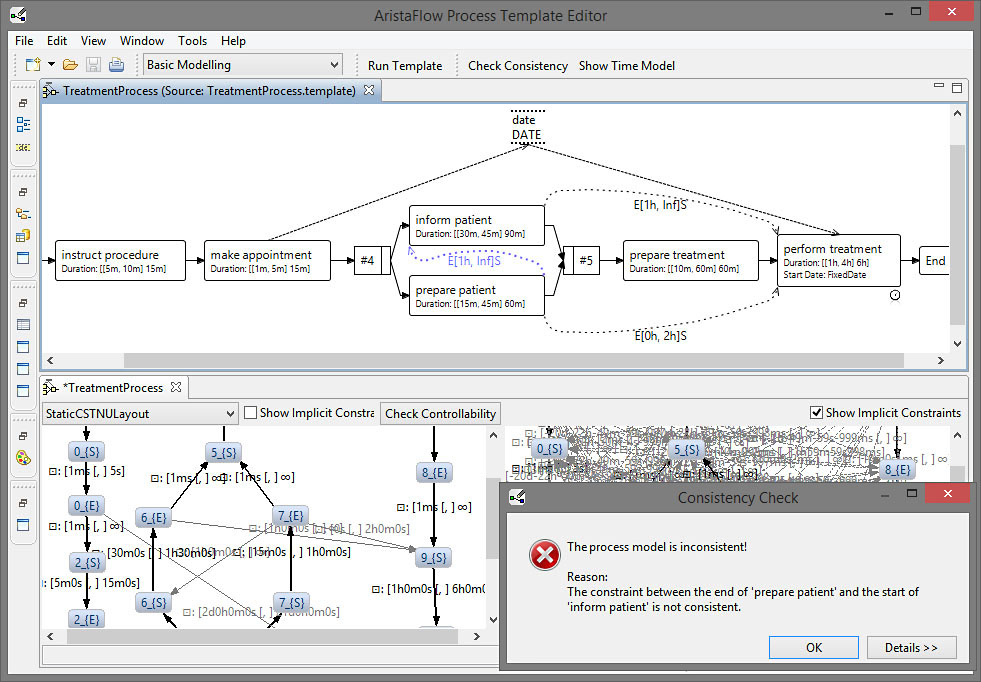
Project Details

Project Team
 | Ulm University, Institute of Databases and Information Systems |
 | Ulm University, Institute of Databases and Information Systems |
Project Partners
Ulm University, Institute of Databases and Information Systems
Research group Prof. Carlo Combi, University of Verona
Duration
The ATAPIS project has been running since 2009.


